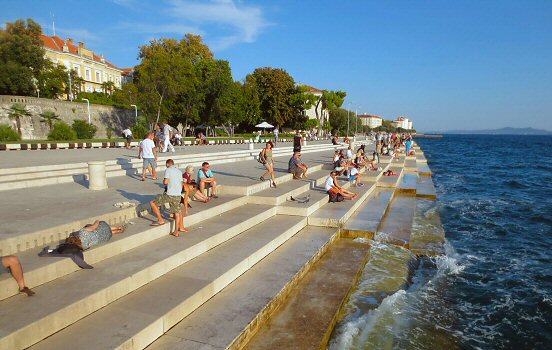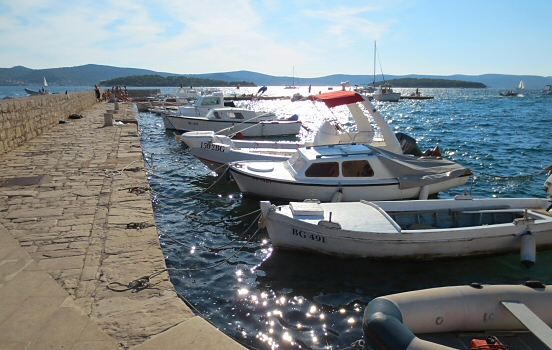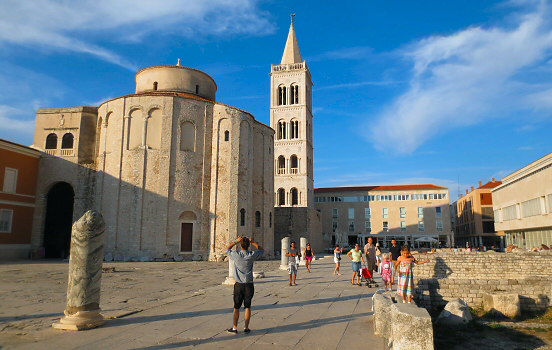There’s something suspicious about a perfect sunset. The Adriatic, that long stretch of salt and myth that hugs the Balkans like an old lover, has more than its fair share.
Here, the sun doesn’t just set, it performs. It bleeds, it burns, it melts into the water like wax from a candle left too close to the edge of the table. But soon everything goes dark and the sea exhales.
The Adriatic doesn’t care if we’re here. It was doing sunsets long before influencers claimed to have “discovered” it. The eastern shore of the sea, which is today Croatia, was once inhabited by Illyrians. After a short colonization by the Greeks, it became a province of the Roman Republic.
 Sea organ in Zadar.
Sea organ in Zadar.
The Middle Ages saw the arrival of Ostrogoths, Lobards, Venetians and even the Byzantine Empire. Fast forward to the Cold War, where the Adriatic became the southernmost flank of the Iron Curtain and at the turn of the millennia the area was plagued by the Yugoslavia-related wars.
 Afternoon walk in Biograd na Moru.
Afternoon walk in Biograd na Moru.
Today the past legacy can be seen all along the Dalmatian coast. As I walk around in the city of Zadar, I’m surrounded by several epochs. The ruins of the Roman forum are located at the heart of the old town, close to the sea. Bits of broken columns are scattered across the area, surrounded by old Venetian structures.
 Roman forum in Zadar.
Roman forum in Zadar.
In the southern part of the square, St Mary’s Church was founded in the infamous year of 1066. The square was heavily affected by the massive bombings during WW2 and the Balkan conflict in the 1990s. Two millennia of history in the same small spot. But the Adriatic is ever patient. Regardless of rulers, the sun keeps setting every evening.
People come to Croatia for many reasons. But in those last ten minutes before the sun vanishes, everything else falls away. Just light, shadow and the salty breath of a sea that’s seen empires rise and fall.
360 photos

Comments
No comments yet.
Leave a reply